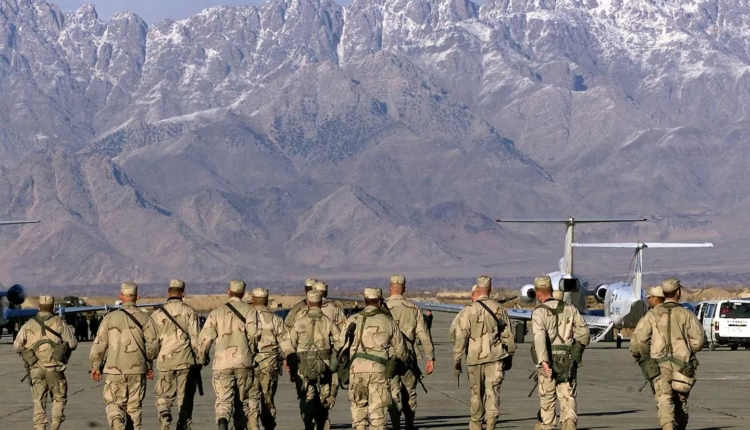Bagram Airport In Afghanistan and the Departures — a simple, step-by-step Story
Two recent departures that matter
On June 29, Donald Rumsfeld — U.S. Defence Secretary under President George W. Bush — died. Rumsfeld was the senior official who announced the start of the U.S. invasion of Afghanistan in October 2001.
A few days later, on July 2, U.S. and allied forces exited Bagram Airbase, the central hub of the American military presence in Afghanistan. Only a small force (about 600 troops) was expected to remain to guard the U.S. diplomatic compound in Kabul.
Why Rumsfeld is remembered in Afghanistan
On 7 October 2001, less than a month after 9/11, Rumsfeld (with General Richard Myers) publicly declared the U.S. campaign against the Taliban and al-Qaeda.
He framed the invasion as a broader effort to punish terrorists and those who sheltered them — a campaign that began at Bagram and across Afghanistan.
WHAT BAGRAM IS AND WHERE IT SITS
Bagram Airbase lies in Parwan province, a little over 60 km north of Kabul. Its location links it to major routes and cities, and gives whoever holds it strategic access to much of the country.
Why Parwan matters (the geography)
Parwan connects to major roads and the Salang Tunnel (a 2.6 km tunnel through the Hindu Kush). These connections make Parwan a key corridor between Kabul and the northern cities like Mazar-e-Sharif, plus routes to Kandahar and Bamiyan.
Deep historical roots — the Kapisa link
The region around Bagram is historically linked to the ancient kingdom of Kapisa, mentioned by the grammarian Panini. Over centuries, it has been a crossroads for trade and armies.
Bagram’s Cold War origins
The runway and base infrastructure date back to the 1950s, when the Soviets established a presence as superpowers jockeyed for influence in Afghanistan.
High-profile visits and U.S. aid in the 1950s–60s
U.S. President Dwight Eisenhower landed at Bagram in December 1959 during a visit to Kabul. In later decades, the U.S. provided development aid, and high-level visits continued — part of an effort to keep Afghanistan out of the Soviet orbit.
Political breakdown: coups and revolution (1973–1978)
On July 19,73, Mohammed Daoud Khan ended the monarchy with a coup and formed a republic. In April 1978, the PDPA (People’s Democratic Party of Afghanistan) overthrew and killed Daoud in the Saur Revolution, setting Afghanistan on a new, violent course.
The killing of U.S. Ambassador Adolph “Spike” Dubs (1979)
Diplomatic ties frayed further when U.S. Ambassador Adolph Dubs was kidnapped and killed in Kabul in February 1979 — a sign of the growing instability.
Soviet intervention and Operation Storm-333 (December 1979)
Factional fighting within the PDPA and fears of instability led the Soviet Union to intervene.
On 24 December 1979, Soviet forces crossed the border; shortly after, Operation Storm-333 removed and killed Hafizullah Amin and installed Babrak Karmal as president. Bagram became a major Soviet staging post with aircraft and ground forces operating from the base.
After the Soviet exit (1989) and the collapse of Najibullah (1992)
The Soviets withdrew in 1989. With the collapse of the USSR and withdrawal of external support, President Mohammad Najibullah lost his position.
By April 1992, Kabul fell to mujahideen factions. Different groups then vied for control of military sites; Ahmed Shah Massoud’s Panjshiris took Bagram.
Why this history matters today
Bagram has repeatedly been the physical and symbolic centre of foreign involvement in Afghanistan — from Cold War competition to Soviet occupation, U.S. counterterror operations, and the most recent NATO presence. Its repeated “arrivals and departures” show how control of strategic locations shapes Afghanistan’s politics and the wider region.
#Bagram #Afghanistan #Rumsfeld #USWithdrawal #SovietInvasion #Parwan #SalangTunnel #Kapisa #History #Geopolitics

